I know this is an old question but I have been doing the same thing myself and the suggestions above do not really help. Inno setup for instance does not use Synedit, it uses scintilla editor.
Also the TPSCustomDebugExec.TranslatePositionEx() does the opposite to what is wanted, it gives a source line number from a runtime code position.
After faffing around for some time I came to the conclusion that the easiest way was to add a function to the Pascalscript code.
the new method is added to the TPSCustomDebugExec class in the uPSdebugger unit.
function TPSCustomDebugExec.HasCode(Filename:string; LineNo:integer):boolean;
var i,j:integer; fi:PFunctionInfo; pt:TIfList; r:PPositionData;
begin
result:=false;
for i := 0 to FDebugDataForProcs.Count -1 do
begin
fi := FDebugDataForProcs[i];
pt := fi^.FPositionTable;
for j := 0 to pt.Count -1 do
begin
r:=pt[j];
result:= SameText(r^.FileName,Filename) and (r^.Row=LineNo);
if result then exit
end;
end;
end;
and the paint gutter callback in the main editor form is as below
procedure Teditor.PaintGutterGlyphs(ACanvas:TCanvas; AClip:TRect;
FirstLine, LastLine: integer);
var a,b:boolean; LH,LH2,X,Y,ImgIndex:integer;
begin
begin
FirstLine := Ed.RowToLine(FirstLine);
LastLine := Ed.RowToLine(LastLine);
X := 14;
LH := Ed.LineHeight;
LH2:=(LH-imglGutterGlyphs.Height) div 2;
while FirstLine <= LastLine do
begin
Y := LH2+LH*(Ed.LineToRow(FirstLine)-Ed.TopLine);
a:= ce.HasBreakPoint(ce.MainFileName,FirstLine);
b:= ce.Exec.HasCode(ce.MainFileName,FirstLine);
if Factiveline=FirstLine then
begin
if a then
ImgIndex := 2 //Blue arrow+red dot (breakpoint and execution point)
else
ImgIndex := 1; //Blue arrow (current line execution point)
end
else
if b then
begin
if a then
ImgIndex := 3 //Valid Breakpoint marker
else
ImgIndex := 0; //blue dot (has code)
end
else
begin
if a then
ImgIndex := 4 //Invalid breakpoint (No code on this line)
else
ImgIndex := -1; //Empty (No code for line)
end;
if ImgIndex >= 0 then
imglGutterGlyphs.Draw(ACanvas, X,Y,ImgIndex);
Inc(FirstLine);
end;
end;
end;
The Synedit with Line numbers, code dots, breakpoints, bookmarks and execution point look as in the image below

